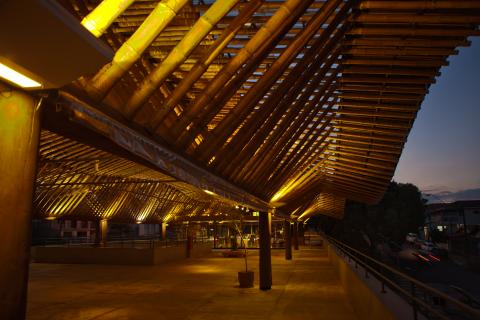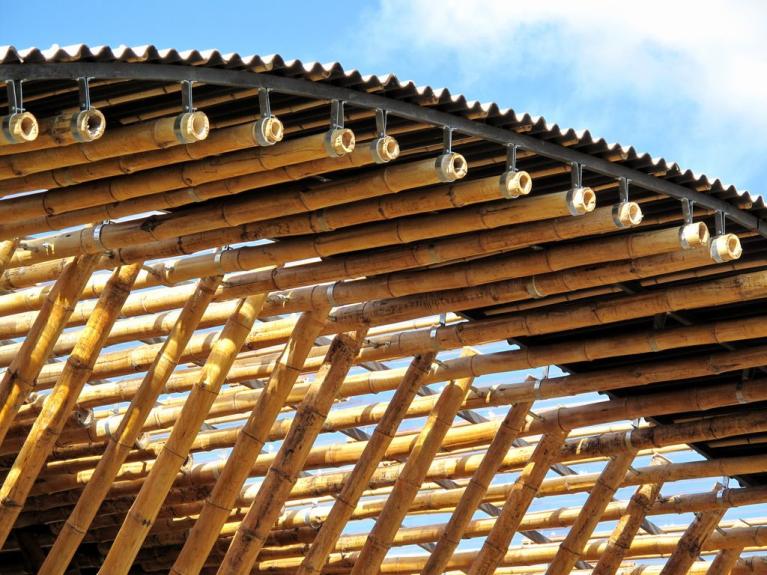A gold Leed for a Cultural Centre in Brazil
Sustainable from the first sight

Leiko Motomura, Architect of this Cultural Centre, explained: “Bamboo attracts people’s attention because they are not used to it. But it is only one element of the building. The whole building is sustainable.” Another factor influenced the Centre design resulted from the will of municipal government and coordinating bodies of Pardinho administration. It was surprising to discover that Max Feffer had already thought about a project of some cultural institution, having designed it with one of the previous municipal administration.
Green Architecture
One of the tripods of sustainability is environmental responsibility. Thus, it seems to be natural that Max Feffer Culture & Sustainability Centre design was based on ecological building concept. Since the establishing of Jatobás Institute at the Fazenda dos Bambus, this fantastic material could not be missed in its structure: the entire roof was realised with bamboo and covered with ONDULINE CLASSIC and ONDUCLAIR PC. Thanks to their light weight, these systems can perfectly match with the light bamboo structure. Very flexible, ONDULINE CLASSIC naturally follows the waves of the structure and ONDUCLAIR PC optimises the transmission of the natural light.
Today, Max Feffer Culture & Sustainability Centre design is recognised worldwide as an example of sustainable building: it was awarded the Leadership in Energy and Environmental Design-LEED certification granted by the United States Green Building Council. The project also received an honourable mention at the 8th International Architecture Biennial of São Paulo.
Project main sustainability elements :
- Land area occupation limited to 15%
- 63% percent of the area planted with native and adapted species
- System of rainwater and grey water reuse
- Grey water treatment system
- Important reduction of energy consumption compared to conventional buildings
- Natural ventilation system
- 79.52 % of the lighting provided by natural light
- Artificial lighting control
- Leverage of pre-existing infrastructure on the site
- Prevention of pollution caused by project realisation plan
- Waste sorting: use in the building itself or recycling
- Wood provided from responsible forest management
- Use of recycled materials
- Use of fast renewable materials: bamboo and eucalyptus
- Use of chemicals with low emission of volatile organic compounds
- Use of plants already adapted to the local environment
- Automatically closing faucets to reduce water consumption
